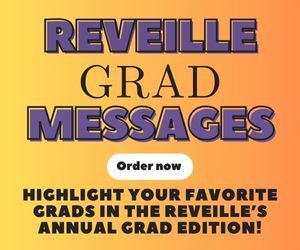Most University students are familiar with the credit card-sized student response clickers used by professors attempting to fully engage a class. Now University faculty are evaluating these clickers and searching for ways to make their use more widespread and effective academically.The Faculty Technology Center hosted a presentation on clicker use Tuesday by Steve Pomarico and Saundra McGuire, two faculty members who use clicker technology.Pomarico, a biological sciences professor, has used the clicker technology since it first came to the University in 2005. Pomarico’s students answer questions about lectures by using the clicker and receive participation points for being in class and answering. Pomarico said clickers draw students into the class and keep them engaged during lectures.”The more they stay connected to the process, the more they end up learning,” Pomarico said.Attendance is up in Pomarico’s classes since he began using clickers, he said. “Before clickers … average attendance in a class of 250 would be anywhere from 50 to 60 percent on a good day, 30 percent on a bad day,” Pomarico said. “This semester, I haven’t had less than 65 percent. It really does draw people.” Sarah Chaisson, elementary education sophomore, said clicker use in her biology class encouraged her to attend class and helps her remember clicker questions that might pop up on an exam.”It motivated me to pay attention and write [questions] down,” she said.Victor Uno, biology sophomore, said he took a biology class in which the instructor used clickers only to take attendance, which did not make him any more interested in course material. But Pomarico said using clickers solely to take attendance is the worst method. Using clickers to engage students with questions is effective for not only students’ benefit, but professors’ as well, Pomarico said.”If I … ask a question and only 30 percent of the class gets the question right, I’m aware that whatever I did … wasn’t enough,” he said.Clicker use is now used by 40 to 45 faculty members, said Barbara McManus, educational technology consultant with Academic Technology Services.McGuire, a chemistry professor, used clickers in her class for the first time this semester. Despite being a “self-described technophobic dinosaur,” McGuire said she learned the technology quickly and wouldn’t want to go back to teaching without clickers. McGuire said asking questions to the class with clickers and discussing the answers afterward helps students identify mistakes they may make on exams.”If students can get the incorrect thinking out on the table before they go to the test, they can make mistakes before, so on the test, they don’t [make mistakes],” McGuire said.Pomarico and McGuire agreed getting an accurate picture of how students are doing in the course is one of the most valuable ways to use the technology.Students and professors alike can also use the technology to evaluate the “gaps” in student performance, said Diane Mohler, learning strategies consultant at the Center for Academic Success.”We all have a different skill set or knowledge set, so you’re bound to have gaps along the way,” Mohler said.Mohler said clickers can impact various learning styles in different ways. Visual learners, for example, may respond to seeing a question and graphical breakdown of answers during class, while kinesthetic or multi-sensory learners benefit from going through the motions of submitting an answer, she said.In addition to learning styles, students’ personality traits are another classroom variable clickers can address, Mohler said. Introverted learners are more likely to participate in the anonymous clicker questions than speak out in class.”We talk about learning styles, but as far as personality traits, that is one of the factors that comes out a lot [in learning] — introverted versus extraverted,” she said.Pomarico said as clickers become more common, the technology is changing to become more accessible to students by incorporating laptops or cell phones.”You won’t have to buy a clicker anymore,” Pomarico said. “You can use other electronic objects you might already be bringing to class.”Although students may no longer have to buy clickers, the companies who produce the technology will still explore ways to make money, Pomarico said.”You would pay a licensing fee to use your cell phone with a data collection Web site that reports it to your professor,” he said.—-Contact Ryan Buxton at [email protected]
Clickers engage students while raising attendance
November 17, 2009






